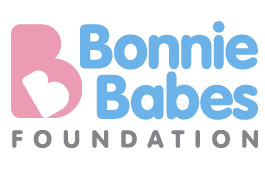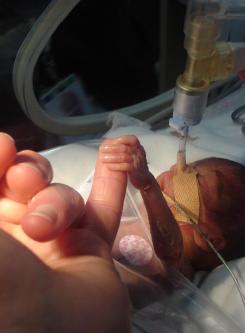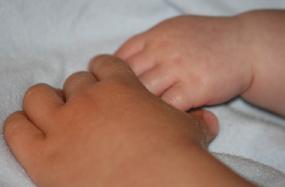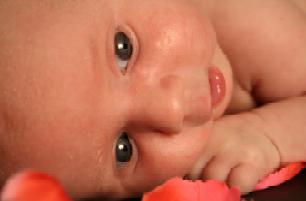A new approach to leadership can help women become more self-confident and effective business leaders.
Women start careers in business and other professions with the same level of intelligence, education, and commitment as men. Yet comparatively few reach the top echelons.
This gap matters not only because the familiar glass ceiling is unfair, but also because the world has an increasingly urgent need for more leaders. All men and women with the brains, the desire, and the perseverance to lead should be encouraged to fulfill their potential and leave their mark.
With all this in mind, the McKinsey Leadership Project—an initiative to help professional women at McKinsey and elsewhere—set out four years ago to learn what drives and sustains successful female leaders. We wanted to help younger women navigate the paths to leadership and, at the same time, to learn how organizations could get the best out of this talented group.
To that end, we have interviewed more than 85 women around the world (and a few good men) who are successful in diverse fields. Some lead 10,000 people or more, others 5 or even fewer. While the specifics of their lives vary, each one shares the goal of making a difference in the wider world. All were willing to discuss their personal experiences and to provide insights into what it takes to stay the leadership course. We have also studied the academic literature; consulted experts in leadership, psychology, organizational behavior, and biology; and sifted through the experiences of hundreds of colleagues at McKinsey.
From the interviews and other research, we have distilled a leadership model comprising five broad and interrelated dimensions (exhibit): meaning, or finding your strengths and putting them to work in the service of an inspiring purpose; managing energy, or knowing where your energy comes from, where it goes, and what you can do to manage it; positive framing, or adopting a more constructive way to view your world, expand your horizons, and gain the resilience to move ahead even when bad things happen; connecting, or identifying who can help you grow, building stronger relationships, and increasing your sense of belonging; and engaging, or finding your voice, becoming self-reliant and confident by accepting opportunities and the inherent risks they bring, and collaborating with others.
We call this model centered leadership. As the name implies, it’s about having a well of physical, intellectual, emotional, and spiritual strength that drives personal achievement and, in turn, inspires others to follow. What’s particularly exciting is that we are starting to discover ways women can actively build the skills to become more self-confident and effective leaders. Centered leadership also works for men, though we have found that the model resonates particularly well with women because we have built it on a foundation of research into their specific needs and experiences.
Centered leadership emphasizes the role of positive emotions. A few characteristics particularly distinguish women from their male counterparts in the workplace. First, women can more often opt out of it than men can. Second, their double burden—motherhood and management—drains energy in a particularly challenging way. Third, they tend to experience emotional ups and downs more often and more intensely than most men do. Given these potentially negative emotions, centered leadership consciously draws on positive psychology, a discipline that seeks to identify what makes healthy people thrive. Although none of the women we interviewed articulated her ideas in precisely those terms, when we dived into the literature and interviewed leading academics, we found strong echoes of what our female leaders had been telling us.
Meaning
‘To love what you do and feel that it matters—how could anything be more fun?’
Meaning is the motivation that moves us. It enables people to discover what interests them and to push themselves to the limit. It makes the heart beat faster, provides energy, and inspires passion. Without meaning, work is a slog between weekends. With meaning, any job can become a calling.
It starts with happiness. Positive psychologists (including Tal Ben-Shahar, Jonathan Haidt, and Martin Seligman) have defined a progression of happiness that leads from pleasure to engagement to meaning. Researchers have demonstrated, for example, that an ice cream break provides only short-lived pleasure; in contrast, the satisfaction derived from an act of kindness or gratitude lasts much longer. Katharine Graham, the first female CEO of a Fortune 500 enterprise (the Washington Post Company), famously said, “To love what you do and feel that it matters—how could anything be more fun?”
Why is meaning important for leaders? Studies have shown that among professionals, it translates into greater job satisfaction, higher productivity, lower turnover, and increased loyalty.1 The benefits also include feelings of transcendence—in other words, contributing to something bigger than yourself generates a deeper sense of meaning, thereby creating a virtuous cycle. Finding meaning in life helped some of the women leaders we interviewed take new paths and accept the personal risks implicit in their goals.
Shelly Lazarus, the chairman and CEO of the advertising firm Ogilvy & Mather Worldwide, described how she “just followed [her] heart, doing the things that [she] loved to do.” This sense of meaning inspired her, early in her career, to jump from Clairol to Ogilvy. Lazarus commented that everyone she knew thought that her decision to go from the client side to the agency side was a strategic move. But “it wasn’t really like that,” she says. “I just loved the interaction with the agency because that was the moment I could see where the ideas came to life.”
People seeking to define what is meaningful can start, as one interviewee put it, by “being honest with yourself about what you’re good at and what you enjoy doing.” Building these signature strengths into everyday activities at work makes you happier, in part by making these activities more meaningful. Although there is no simple formula for matching your strengths to any single industry or function, you can look for patterns in jobs that have and haven’t worked out and talk with others about your experiences.
The connection between signature strengths and work can change because priorities do; sometimes, for example, a job is better than a calling, especially for young mothers. Our interviews show that this ebb and flow is natural and that the key to success is being aware of the shifts—and making conscious choices about them—in the context of bigger goals, personal or professional.
To read more on meaning:
Tal Ben-Shahar, Happier: Learn the Secrets to Daily Joy and Lasting Fulfillment, New York: McGraw-Hill, 2007.
Martin E. P. Seligman, Authentic Happiness: Using the New Positive Psychology to Realize Your Potential for Lasting Fulfillment, New York: Free Press, 2004.
Sonja Lyubomirsky, The How of Happiness: A Scientific Approach to Getting the Life You Want, New York: Penguin, 2007.
For more visit McKinsey
 Wednesday, September 30, 2009 at 08:44PM
Wednesday, September 30, 2009 at 08:44PM 










